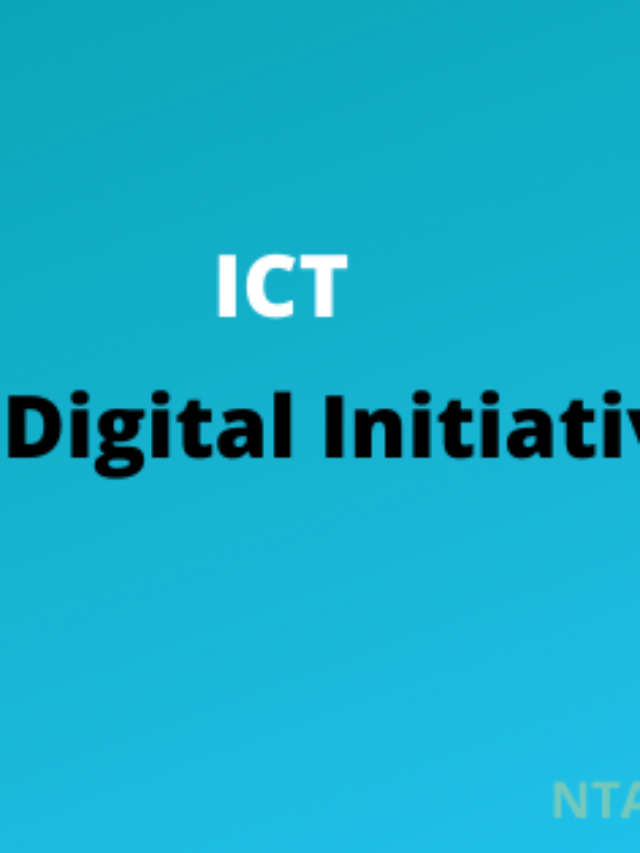Which one of the following statements is not correct?
- Any person can do research
- Research may be without a hypothesis.
- Research requires library facilities
- Research is not always systematic
Solution:
Below are the definition of Research:
1. Best and Kahn, in their book Research in Education, define research as the systematic and objective analysis and recording of controlled observations that may lead to the development of generalization, principles or theories, resulting in prediction and possibly ultimate control of events.”
2. Busha in his publication Research Methods in Librarianship says that Research is a systematic quest for knowledge that is characterized by disciplined inquiry. An efficient and effective approach to expand knowledge is the conduct of special, planned, and structured investigations.”
3. According to the Random House Dictionary of the English Language, Research is a systematic inquiry into a subject in order to discover or revise facts, theories, etc.
Thus, research is always systematic.
Additional Information
1. Any person can do research: Any person who wants to explore their curiosity and commit to scholarly investigations in an area of interest, pose new questions, or present new ways of thinking about a given issue or topic, is creative and open to making discoveries can do research.
2. Research may be without a hypothesis: An hypothesis is a specific statement of prediction. It describes in concrete (rather than theoretical) terms what you expect will happen in your study. Not all studies have hypotheses. Sometimes a study is designed to be exploratory (inductive research). There is no formal hypothesis, and perhaps the purpose of the study is to explore some areas more thoroughly in order to develop some specific hypothesis or prediction that can be tested in future research. Descriptive studies don’t need a hypothesis.
3. Research requires library facilities: Easy access to high-quality content is a key foundation for good research which is facilitated by libraries. Libraries are a physical manifestation of the values of the academy and of scholarship. Libraries promote and exploit new technologies and new models of scholarly communications. Dedicated spaces provide a better work environment for researchers. Also, library repositories help a researcher to conduct the literature review
Which one is the most important factor for selection of a research problem?
- Researcher’s interest.
- Researchability of the problem.
- Administrative suitability.
- Uniqueness of the problem
Solution:
Key-Points
1. A research problem is a question that a research project sets out to answer’.
2. Choosing a research problem is an essential element of both quantitative and qualitative research.
3. A research problem is a specific issue, difficulty, contradiction, or gap in knowledge that you will aim to address in your research.
4. The type of research problem you choose depends on your broad topic of interest and the type of research you want to do.
5. The problem also needs to have relevance in terms of importance, and be measurable.
Important Point
Researcher’s interest., Administrative Suitability, Uniqueness Of The Problem, etc. are also important factors for the selection of a research problem, but the most important factor is the Researchability of the problem.
The most important factor for the selection of a research problem is the Researchability of the problem. Thus, option 2 is the correct answer.
In which of the following, target related specifications will be considered necessary?
- Seminars
- Conferences
- Symposium
- Workshops
Solution:
Educational practitioners are engaged in various professional activities to add to their strengths and competencies in a formal setting. These activities can include doing research, seminar, workshop, conferences, writing articles, reviews, journals, etc.
Seminars
A seminar is a small group discussion in a formal setting with a clear agenda A seminar is a specialist gathering. A speaker presents a theme or set of papers and it is discussed by all the participants. The Chairperson of the seminar guides, directs, coordinates, and organizes the discussion systematically to optimize time and resources.
Conferences
The conference is a meeting for discussion. They focus on a particular theme and have many speakers who may present different perspectives on the same situation, an area of proficiency, or problem. Individuals from different organizations attend conferences wishing to assemble to discuss a particular topic.
Symposium
The symposium is organized to discuss the significant issue of contemporary nature in a short time. It needs more time and preparation. The objective of a Symposium will be an intensive discussion on one particular topic, which is potentially significant for specialists working on the problem
Workshops
A workshop is comprising a small, a selected group of teachers or experts drawn from actual working situations or related experts who theorize on the activities Workshop are interactive sessions on small events, usually, a day or two long, dedicated to discussing on particular work, on a specific topic in which a group of people engages in brainstorming, problem-solving and knowledge-sharing. These are intended to augment the Professional competence of research workers, which include specialized short-term institutional programs on recent advances mainly on methods and techniques.
Hence, it can be concluded from the given points that target related specifications is considered necessary in Workshops
One way to measure the extent to which a measure is free of random error is to compute its:
- Content validity
- Experimenter’s bias
- Test-retest reliability
- Demand characteristics
Solution:
• Random error is a term used to describe all chance or random factors than confound-undermine—the measurement of any phenomena.
• Random errors in measurement are inconsistent errors that happen by chance. They are inherently unpredictable and transitory
• They include sampling errors, unpredictable fluctuations in the measurement apparatus, or a change in a respondent’s mood, which may cause a person to offer an answer to a question that might differ from the one he or she would normally provide.
• The amount of random errors is inversely related to the reliability of a measurement instrument. As the number of random errors decreases, reliability rises and vice versa.
Key-Points
Reliability:
• As stated above, reliability is concerned with the extent to which an experiment, test, or measurement procedure yields consistent results on repeated trials.
• Reliability is the degree to which a measure is free from random errors.
• But, due to every present chance of random errors, we can never achieve a completely error-free, 100% reliable measure. The risk of unreliability is always present to a limited extent.
Hence, one way to measure the extent to which a measure is free of random error is to compute its Test-retest reliability.
Additional Information
The basic methods for estimating the reliability of empirical measurements:
1) Test-Retest Method,
2) Equivalent Form Method, and
3) Internal Consistency Method.
Test-Retest Method:
• The test-retest method repeats the measurement-repeats the survey—under similar conditions.
• The second test is typically conducted among the same respondents as the first test after a short period of time has elapsed
• The goal of the test-retest method is to uncover random errors, which will be shown by different results in the two tests.
• If the results of the two tests are highly consistent, we can conclude that the measurements are stable and reliability is deemed high.
• Reliability is equal to the correlation between the two test scores taken among the same respondents at different times.
In simple terms ‘reliability’ is the:
- consistency of scores on tests
- appropriateness of interpretation based on test scores
- ways in which people are the same
- rank order of participants on some measure
Solutions:
Reliability:-
1. It is an accurate measure of the stability or consistency of test scores.
2. It is the ability for a test mechanism or research outcomes to be repeatable with the same findings.
3. It emphasizes a precision testing tool that would assess the accurate magnitude each time it is used.
4. A reliable test will accurately measure and aid trustworthy research findings that can be replicated over and over.
5. Internal reliability measures the extent to which the test is actually measuring what is intended to measure
6. External reliability ensures that the test measurement can be generalized beyond the domain of the usage or scope of the examination.
Therefore, in simple terms ‘reliability’ is the consistency of scores on tests.
‘Placebo effect means:
- Negative effect
- Positive effect
- Natural effect
- No effect
Solution:
How Are Placebos Used:
1. A placebo is anything that seems to be a “real” medical treatment — but isn’t. It could be a pill, a shot, or some other type of “fake” treatment.
2. Researchers use placebos during studies to help them understand what effect a new drug or some other treatment might have on a particular condition.
3. For instance, some people in a study might be given a new drug to lower cholesterol. Others would get a placebo. None of the people in the study will know if they got the real treatment or the placebo.
4. Researchers then compare the effects of the drug and the placebo on the people in the study. That way, they can determine the effectiveness of the new drug and check for side effects.
Key-Points
1. “The placebo effect is more than positive thinking – believing a treatment or procedure will work. It’s about creating a stronger connection between the brain and body and how they work together,” says Professor Ted Kaptchuk of Harvard-affiliated Beth Israel Deaconess Medical Center, whose research focuses on the placebo effect.
2. Placebos won’t lower your cholesterol or shrink a tumor. Instead, placebos work on symptoms modulated by the brain, like the perception of pain.
3. “Placebos may make you feel better, but they will not cure you,” says Kaptchuk. “They have been shown to be most effective for conditions like pain management, stress-related insomnia, and cancer treatment side effects like fatigue and nausea.”
Therefore, the ‘Placebo effect means a Positive effect.
Note:
1. Sometimes a person can have a respond to a placebo. The response can be positive or negative. For instance, a person’s symptoms may improve. Or the person may have what appears to be side effects from the treatment. These responses are known as the “placebo effect.”
2. There are some conditions in which a placebo can produce results even when people know they are taking a placebo. Studies show that placebos can affect conditions such as:
• Depression
• Pain
• Sleep disorders
• Irritable bowel syndrome
Menopause
What is the aim of educational research?
- Identifying major problems that need to be solved
- Searching for the new facts and principles underlying the process of education
- Identifying the aims of education
- Identifying the values that need to be inculcated in the pupils
Solution:
Research is a systematic inquiry based on the scientific method and concerned with understanding, prediction and control of phenomena. Educational research applies the scientific method for the systematic study of educational situations. It seeks to help us solve educational problems (not merely identification of problem) and searching for the new facts and principles underlying the process of education. Studies in educational research are categorised under two broad heads:
Key-Points
Quantitative Studies.
Experimental Research: It is concerned with the investigation of cause-effect relationships in educational events. Variable(s) related to cause must precede those related to the effects. Since in terms of time, the cause variables occur first, they are also known as ‘antecedents’ while effect variables are called ‘consequents’.
• Quasi-experimental Studies: The literal meaning of ‘quasi’ is “seemingly, but not really”. Thus research studies that do not use a truly experimental design are called quasi-experimental studies. This type of research investigates the same issues that experimental research does, the difference is only in terms of the manner in which an experiment is designed and conducted.
• Correlational Research: Correlation means ‘going togetherness’; in other words, a correlation between two variables tells us about the relationship between them. For example, if we know how achievement in mathematics (x) is related with achievement in science (y), then on the basis of marks, in ‘x’ we can predict marks in ‘y’ and vice versa.
Qualitative or Non-Quantitative Studies: Qualitative studies are also called ‘descriptive studies by some researchers.
• Descriptive Research: Below are part of descriptive research:
. It investigates ‘what exists’. If it is conducted on large samples through surveys, it is called a ‘survey study’.
. It may also be based on a detailed and comprehensive study of just one unit of population, i.e. just one case, thus resulting in a ‘case study’.
o Descriptive research may examine how various aspects of human development (e.g. intelligence, attitudes, social development, moral development) or skills (cognitive skills, social interaction skills etc;) develop in groups of persons of the same characteristics. Such studies are called ‘developmental studies
. Similarly analysis of documents related to a particular aspect/area of education (e.g. religious and moral instruction, value education etc;) is collectively known as ‘documentary analysis studies’.
Ethnographic Research: It is just the opposite of experimental research. In the latter, research is conducted through carefully controlled experiments but in ethnographic research, the emphasis is on naturalistic (i.e. totally without control) field studies.
• Historical studies: They are concerned with the study of what was’; they try to determine, evaluate and understand past events primarily for the purpose of gaining a clearer understanding of the present and a better prediction of the future.
• Philosophical Research: It studies in education can be taken up under historical research. ‘These studies usually deal with philosophical aspects of education (e.g. related to knowledge and acquiring knowledge), metaphysical (i.e. related to reality aspects) or axiological (i.e. concerned with values) aspects of the education process. Philosophical research is basically interpretive in its approach and it involves a careful definition of the terms and processes.
Hence, we conclude that searching for the new facts and principles underlying the process of education is the aim of educational research.
External validity in research refers to
- The rigour of the study
- The accuracy of a procedure
- The relation of the research problem with the researcher’s personal life
- The extent of generalizability that the results provide
Solution:
Validity in research mainly stands for accuracy of procedures, research instruments, tests, etc. The concept of validity can also be understood by posing a question, ‘Are we measuring or able to measure what we originally intended to measure?’. Validity means that research must be unbiased and free from any systematic error as these may impact the applicability of research. Without validity, research goes in the wrong direction.
Key-Points
External Validity:
• It means that external factors that can affect the study must be controlled.
• For example, the response of a respondent in social sciences surveys may be affected by the mere presence of a non-participant observer.
•It also refers to the extent to which the research outcome can be generalized and applied to other cases that are not under study.
• It is also termed as credibility and external validity is termed as generalizability or transferability.
Hence, External validity in research refers to the extent of generalizability that the results provide.
A characteristic to be ascertained initially in a good research is:
- Well formulated hypothesis
- A good research supervisor
- Adequate library work
- A well formulated problem
Solution:
Research is an organized, systematic, and scientific inquiry into a subject to discover facts, theories or to find answers to a problem. It involves several steps including identification of a research problem, review of literature, formulation of hypothesis, research design, data collection, analysis, and interpretation, etc.
Key-Points
Formulation of Research Problem and its Importance:
1. The first thing after undertaking a study is to identify and determine the problem to study. Any question that the researcher wants to be answered or investigate is called a research problem.
2. A research problem can be compared to the foundation of a building. The type and design of the building are dependent upon the foundation. A strong foundation will result in a strong building.
3. Identifying a research problem is of utmost importance as the issue identified in a particular setting is what guides and motivates the need for conducting the research, it lays the foundation of an entire project. If the foundation is shaky, the entire project is doomed to failure.
4. So, the research problem serves as the foundation of a research study, if it is well formulated, you can expect a good study to follow.
Hence, a characteristic to be ascertained initially in good research is a well-formulated problem.











